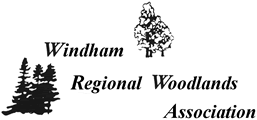CANCELED
Friday & Saturday, May 15 and 16
Jeffrey Ward, Chief Scientist from the Department of Forestry and Horticulture at the Connecticut Agricultural Experiment Station
130 Austine Drive, Holton Hall 4th Floor, Brattleboro, Vermont
At 7:00 p.m. Friday evening, May 15, and on a woods walk the next morning. The woods walk will be at Joe and Barbara Mercer’s house in Westminster. The mailing address is 117 Hickory Ridge Rd. in Putney, but the parcel is just north of the Putney/Westminster line.
He writes: Dr. Ralph Nyland (SUNY College of Environmental Science and Forestry) has pithily noted that to obtain adequate regeneration in northern hardwoods you should “Shoot the deer, poison the beech, and manage the light.” Separately or in combination, overabundant white-tail deer and understories dominated by invasive shrubs have been linked to regeneration failures throughout eastern forests.
Our talk will begin by examining the interaction of deer browsing and invasive shrubs on the composition and structure of woody regeneration and native plant communities. We have found that in areas with invasive shrub thickets, both deer and the invasives must be controlled. A second study found that for properties where the management goal is to create dense habitat with high species diversity, managers should both encourage hunting to reduce pressure on browse sensitive species and leave as few post-harvest residual trees as possible to maximize growing space for regeneration.

Comments are closed.